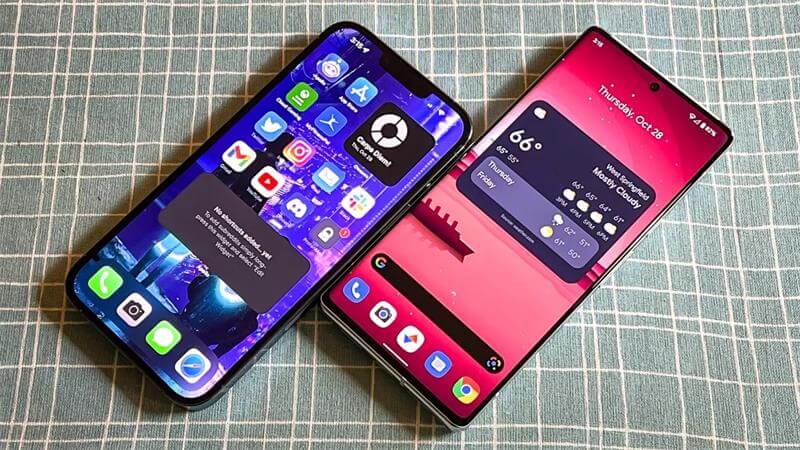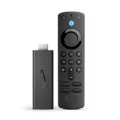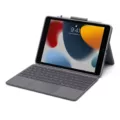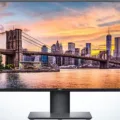IPhones and Androids are two popular choices when it comes to smartphones. While both have their own unique features and advantages, one factor that often comes into consideration is signal reception. Many users wonder if iPhones have better reception than Androids, or vice versa. Let’s delve into this topic and explore the factors that can affect reception on both types of devices.
Firstly, it’s important to note that signal reception can vary depending on various factors, such as the location, network coverage, and even the specific model of the phone. However, in general, iPhones tend to have good reception capabilities. This can be attributed to Apple’s meticulous design and engineering, which includes optimizing the antenna and radio components for better signal performance.
IPhones are known for their seamless integration of hardware and software, which can contribute to improved reception. The iOS operating system is optimized to work efficiently with the hardware, ensuring a smooth and reliable connection. Additionally, iPhones often support a wide range of network bands, allowing them to connect to different carriers and networks, enhancing coverage and reception in different areas.
On the other hand, Android devices come in a wide range of models from various manufacturers. This means that not all Android phones are created equal in terms of reception capabilities. Some Android devices may have antennas and radios that are not as optimized as those found in iPhones, resulting in potentially weaker signal reception.
However, it’s worth noting that newer Android models have made significant advancements in terms of reception. Manufacturers have been investing in improving the antenna and radio components, resulting in better signal performance. Additionally, Android devices often offer more customization options, allowing users to fine-tune and optimize their devices for better reception.
Ultimately, when it comes to signal reception, it’s essential to consider various factors beyond just the type of phone. Factors like network coverage, carrier, and location can have a significant impact on reception. It’s recommended to research and compare specific models and their reception capabilities before making a purchase.
While iPhones are generally known for their good reception capabilities, it’s important to consider other factors that can affect signal strength. Android devices have also made advancements in reception technology, and newer models can offer comparable performance. Ultimately, the best phone for reception will depend on individual needs and preferences, and it’s advisable to research and compare specific models before making a decision.

Which Phone Has the Best Signal Strength?
According to Stella Doradus, a reputable source in the field of mobile signal amplification, the Samsung Galaxy S20 is considered the top performer in terms of signal reception. It is followed closely by the Samsung Galaxy S22 and the Xiaomi 12. These phones have been found to provide excellent signal strength, ensuring a reliable and uninterrupted connection for users.
However, if you are not in a position to purchase a new mobile phone, there is an alternative solution available to improve your mobile signal at home. Stella Doradus offers the StellaHome repeater, which is designed to amplify your mobile signal and provide better coverage within your residential or office space.
By installing the StellaHome repeater, you can enhance your mobile signal strength, leading to improved call quality, faster data speeds, and reduced instances of dropped calls. This solution is particularly beneficial for areas with weak signal reception or areas where obstacles such as buildings or natural terrain hinder the signal’s reach.
The Samsung Galaxy S20, Samsung Galaxy S22, and Xiaomi 12 are recognized for their exceptional signal reception capabilities. However, if purchasing a new phone is not feasible, consider investing in a StellaHome repeater to enhance your mobile signal strength in your home or office environment.
Do the New iPhones Get Better Reception?
Newer iPhones generally offer better reception compared to older models. This improvement can be attributed to several factors:
1. Expanded Signal Spectrum: Newer iPhones are designed to tap into a wider range of signal frequencies, allowing them to connect to more parts of the signal spectrum. This means that they can access a greater number of available network bands, resulting in improved coverage and reception.
2. Support for 5G Technology: The latest iPhone models support 5G technology, which provides faster download and upload speeds, lower latency, and more reliable connections. With 5G networks becoming more prevalent, having a compatible device like a new iPhone ensures better reception and performance.
3. Enhanced LTE Connectivity: Alongside 5G, newer iPhones also support advanced versions of 4G LTE technology. These advancements include features like carrier aggregation, which allows the device to combine multiple LTE bands for improved data speeds and reception.
4. Improved Antenna Design: Apple continuously works on improving the antenna design in their iPhones. Newer models often feature upgraded antenna systems that are better equipped to capture and transmit signals, resulting in enhanced reception.
5. Network Compatibility: With each new iPhone release, Apple ensures compatibility with the latest network technologies and bands. This means that new models can connect to a wider variety of networks, including those that may have been newly deployed or upgraded with improved coverage.
The new iPhones generally offer better reception due to their ability to tap into more parts of the signal spectrum, support for 5G technology, enhanced LTE connectivity, improved antenna design, and compatibility with a wider range of networks. These factors combine to provide users with improved coverage, faster speeds, and more reliable connections.
Do Some Smartphones Have Better Reception Than Others?
Some smartphones indeed have better reception than others. This variation in signal reception can be attributed to several factors, including the design strategy of the manufacturer and the specific components used in the phone.
1. Antennas: The antenna plays a crucial role in receiving and transmitting signals. Different smartphone models may have variations in antenna design, placement, and size. Some manufacturers may prioritize optimizing the antenna for better signal reception, while others may focus on other aspects such as aesthetics or slimness of the device.
2. Radios: The radio frequency (RF) performance of a smartphone is determined by the quality of its radio components. These components include the RF transceiver, amplifier, and filters. Higher-end smartphones often use more advanced and efficient radio components, resulting in better reception and faster data speeds.
3. Signal processing: Smartphones employ various signal processing techniques to enhance signal reception. These techniques include noise cancellation, beamforming, and carrier aggregation. The implementation and effectiveness of these techniques can vary across different smartphone models, leading to differences in signal reception.
4. Price point: The price of a smartphone can also influence its reception capabilities. Higher-end smartphones typically come with better hardware components, including antennas and radios, which can result in improved signal reception. In contrast, budget-friendly devices may have compromised signal performance to keep costs down.
5. Carrier compatibility: It’s worth noting that signal reception can also be influenced by the compatibility of a smartphone with different cellular networks. Some smartphones are specifically designed to work optimally with certain carriers or network technologies, while others may have broader compatibility across multiple networks.
The variation in signal reception among smartphones can be attributed to different factors, including antenna design, radio components, signal processing techniques, price point, and carrier compatibility. It’s important to consider these factors when choosing a smartphone, especially if signal reception is a crucial aspect for you.
Why Are Androids Better Than iPhones?
There are several reasons why Androids are considered better than iPhones. Here are the key factors:
1. Customizability: Android provides a high level of customizability, allowing users to personalize their devices according to their preferences. Users can change wallpapers, themes, animations, lock screens, and even the entire user interface. This level of customization is not available on iPhones.
2. More features: Android skins, such as Samsung’s One UI or Xiaomi’s MIUI, offer a wide range of additional features compared to iOS. These features include split-screen multitasking, enhanced notification management, app drawer, and more. Android devices also support expandable storage, allowing users to increase storage capacity with microSD cards, which is not possible on iPhones.
3. Greater device variety: Android offers a wide range of devices from various manufacturers, providing users with options to choose from based on their preferences and budget. This diversity allows users to find a device that suits their specific needs, whether it’s a budget-friendly option or a high-end flagship.
4. Flexibility in app installation: Android allows users to install apps from multiple sources, including third-party app stores, which provides greater flexibility and access to a wider range of applications. On the other hand, iPhones restrict app installation to the Apple App Store, limiting the choices available to users.
5. More affordable options: Android devices come in a variety of price ranges, making them more accessible to a larger audience. Users can find Android devices that fit their budget without compromising on features or performance. iPhones, on the other hand, are generally more expensive and may not be affordable for everyone.
6. Easy file transfer: Android devices offer a straightforward file transfer process, allowing users to easily transfer files to and from their devices using a USB cable or wirelessly. iPhones, on the other hand, require users to go through iTunes or iCloud for file transfers, which can be more complicated and time-consuming.
Androids offer greater customizability, more features, a wider variety of devices, flexibility in app installation, affordability, and easier file transfer options compared to iPhones. These factors make Android a preferred choice for users who value personalization, versatility, and a wider range of options.
Conclusion
IPhones have their own unique advantages and features that make them a popular choice among consumers. They are known for their sleek and premium design, seamless integration with other Apple devices, and user-friendly interface. The iOS operating system offers a smooth and optimized user experience, with regular software updates and a focus on security and privacy.
However, it’s important to note that iPhones may not offer the same level of customizability as Android devices. Android allows for more flexibility in terms of personalization, from changing wallpapers to customizing themes and animations. Additionally, Android skins often come with a wider range of features compared to iOS.
When it comes to signal reception, newer iPhone models generally perform well. However, it’s worth considering that different phone models and manufacturers may prioritize performance and reception differently. Factors such as antenna design, radio technology, and price point can all influence signal reception.
Ultimately, the choice between an iPhone and an Android device depends on personal preference and individual needs. It’s important to consider factors such as design, user interface, customizability, and signal reception to make an informed decision.








